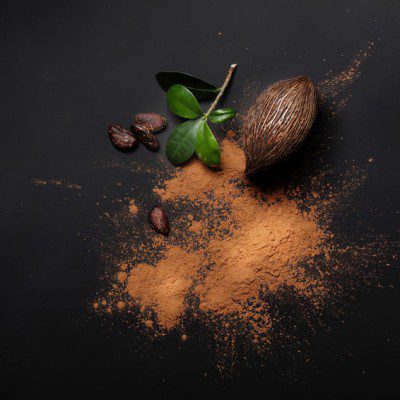Origin
The idea of sustainable chocolate emerged in 1998 when stakeholders in the cacao industry organized to discuss the future of cocoa. At this time, the crop was at risk due to pests, disease and fragility of the tropical infrastructure. The stakeholders realized the issues were not just environmental, but social and economic as well. In order to guarantee the future of chocolate, the sustainable cocoa sector was created. It delivers benefits across the entire supply chain.3
Sustainability programs, like CocoaAction by the World Cocoa Foundation, soon emerged. The goal was improving the overall conditions of many cacao growers and farmers.2
Most of these programs involve governments, industry and non‐governmental organizations working together. There, the goal is to build confidence and trust around consumers and producers. There are several independent certification bodies which do on-site inspections and allow chocolate producers to use their logos on product packages. Some examples are:2
- Rainforest Alliance™
- Fairtrade International®
- UTZ Certified™
Creating a sustainable program
A sustainable chocolate program should include:
- Social responsibility and the protection of human rights
- Environmental responsibility
- Education and training of cacao farmers on good agricultural practices for cacao growth
- Cooperation programs to bring farmers and industrial chocolate processors together
- Fair cacao trade practices
- Fair labor practices
Several chocolate companies have created sustainability programs to protect the future chocolate supply. Sustainable chocolate is produced under three pillars of sustainable development:4,5
- Ecology/environmental protection: using agricultural tools that reduce deforestation, end the use of toxic herbicides and pesticides, and prevent soil erosion.
- People/society: Farmers receive skills training to help them better manage their plantations and increase yields. Also, fair labor practices prohibit child labor.
- Economy: Rebalancing the profit throughout the supply chain to create a win/win proposition for every participant in the supply chain.
Redistributing profit throughout the supply chain improves the quality of life for the people farming cacao and the communities they live in. Furthermore, people and planet benefit through the introduction of sustainable farming methods, which improve the farm’s productivity. Also, it reduces environmental damage potentially caused by conventional farming methods. After all, the higher a farm’s yield, the more money the farmer will earn.5
All beans can be traced back to the farmer who sold the beans and every bag of fermented or dried beans receives a tag with this information. The traceability of sustainable chocolate has positively impacted countries where cacao is grown. Some examples are Africa, South America, Central America, and Vietnam.5
Why choose sustainable chocolate for your baked goods?
Sustainable Chocolate has the same functionality in baked goods as conventionally grown chocolate.
Label-conscious consumers or ones seeking organic goods are the biggest supporters of sustainable products. Furthermore, younger generations such as Millenials and Gen Z are willing to pay more for products that have been grown and processed in a responsible, sustainable and ethical manner.4,6
Regulation
Sustainable chocolate is not an approved label claim by the USDA or FDA. Producers that have products carrying sustainable chocolate label claims are required to provide documentation. They must demonstrate claim compliance to the appropriate regulatory agencies or certification bodies.
References
- Baldwin, C.J. “Introduction to the Principles.” The 10 Principles of Food Industry Sustainability, John Wiley & Sons, Ltd., 2015, pp. 1–13.
- Fowler, M.S., and Coutel, F. “Cocoa Beans: From Tree to Factory.” Beckett’s Industrial Chocolate Manufacture and Use, 5th Edition, John Wiley & Sons Ltd, 2017, pp. 9–49.
- Long, J.C. “From Cocoa to CSR: Finding sustainability in a cup of hot chocolate.” Thunderbird International Business Review 50.5 (2008): 315-320.
- Janßen, D., and Langen, N. “The Bunch Of Sustainability Labels – Do Consumers Differentiate?” Journal of Cleaner Production 143 (2017): 1233-1245.
- “Cacao-Trace – Growing Next Generation Cocoa for Chocolate Lovers.” Cacao-Trace. Puratos. www.cacaotrace.com. Accessed 3 July 2017.
- Vecchio, R., and Annunziata, A. “Willingness-to-pay for sustainability-labelled chocolate: an experimental auction approach.” Journal of Cleaner Production 86 (2015): 335-342.

